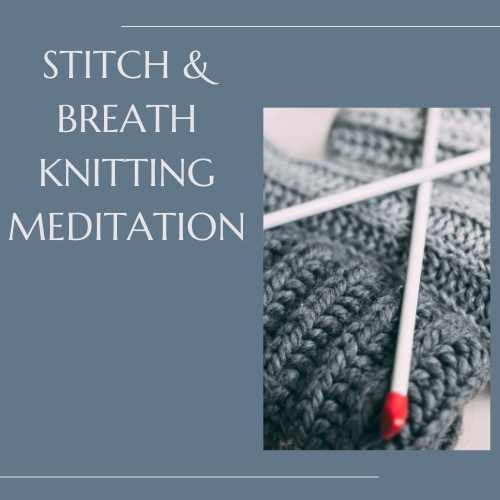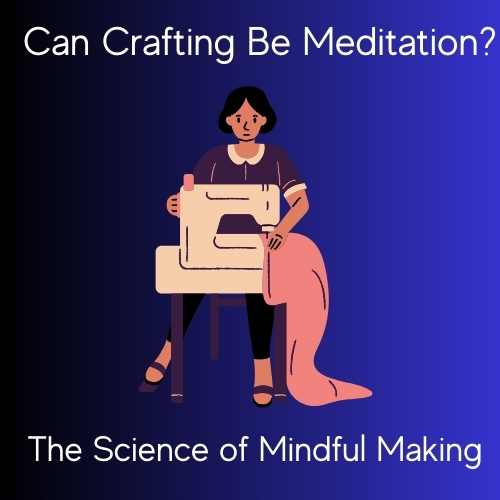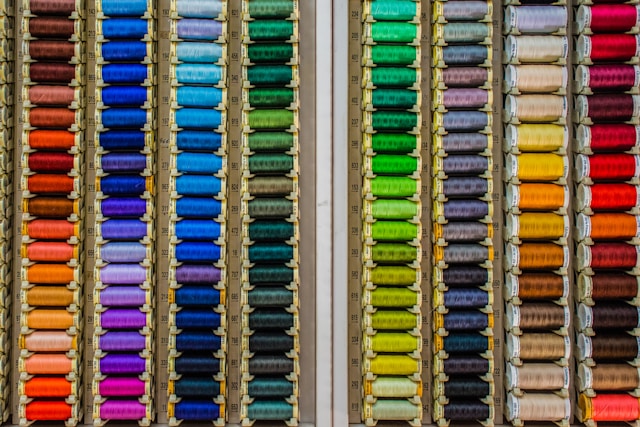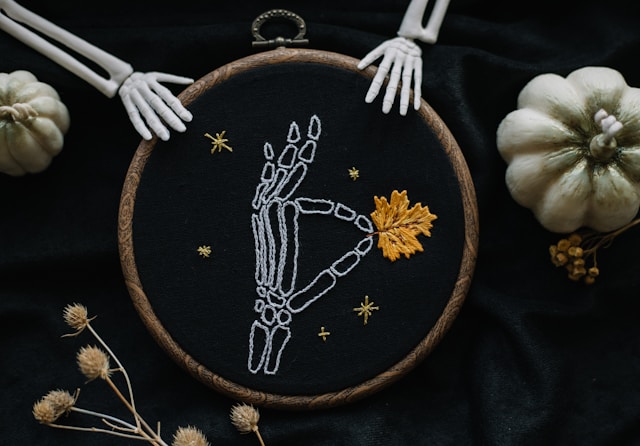Knitting is more than a craft—it’s a rhythmic, repetitive movement that can quiet the mind and center the body. This guided mindfulness exercise will help you synchronize your breath with your stitches, creating a meditative flow that promotes relaxation and focus.
Explore this in more depth by joining my Craft to Heal workshop.
Step 1: Set the Stage
Find a quiet space where you can sit comfortably with your knitting. Choose a simple pattern—garter stitch or stockinette works best, as complex patterns may demand too much analytical focus. Take a moment to notice the weight of your yarn, the feel of your needles, and the space around you.
Step 2: Align Your Breath with Your Stitches
Now, begin knitting slowly, matching each step with your breath:
- Inhale – Insert the right needle into the next stitch on the left needle. Feel your lungs expand as you prepare to wrap the yarn.
- Exhale – Wrap the working yarn around the right needle and pull it through the stitch. Release any tension in your shoulders.
- Inhale – Slip the old stitch off the left needle, feeling the completion of the movement.
- Exhale – Move to the next stitch, allowing your breath and hands to move in harmony.
Continue this pattern, keeping your breath steady and natural. If your mind wanders, gently guide your focus back to the movement of your hands and the rhythm of your breath.
Step 3: Engage Your Senses Fully
To deepen your mindfulness, bring awareness to each of your five senses as you knit. This anchors you in the present moment, making each stitch a point of focus and grounding.
👁 Sight – Observe the Motion and Form
Watch your hands as they move, appreciating the intricate dance of your fingers and needles. Notice:
- The loops of yarn forming neat, symmetrical stitches.
- The way the fabric builds row by row, a slow and steady transformation.
- The movement of the yarn, flowing smoothly from the ball to your needles.
- Any small imperfections—embrace them as part of the organic beauty of handmade work.
Try to see each stitch as though you are knitting for the first time, observing the details without judgment.
🖐 Touch – Feel Every Texture and Movement
Close your eyes for a few stitches and focus purely on touch. Pay attention to:
- The yarn’s texture—is it soft, coarse, smooth, or bumpy?
- The gentle resistance as you slide the needle into each loop.
- The slight tension as the yarn stretches and contracts between your fingers.
- The warmth or coolness of the needles in your hands.
If your hands feel tense, relax your grip. Let your hands move with ease, feeling the natural rhythm of the process.
👂 Sound – Listen to the Rhythms of Knitting
Every craft has its own quiet music. Tune in to:
- The soft clicking of your needles touching.
- The subtle whisper of yarn gliding through your fingers.
- The sound of your breath—steady, calm, and in sync with your movement.
If you’re knitting in silence, let these sounds be a gentle metronome for your breath. If you have background music, choose something soothing and allow it to complement your knitting pace.
👃 Smell – Notice the Scent of Your Materials
Engage your sense of smell, something we often overlook when crafting. Inhale and notice:
- The scent of natural wool, cotton, or linen.
- Any lingering fragrance from a hand-dyed or treated yarn.
- The surrounding air—does it carry a hint of tea, wood, or fresh fabric?
Taking a moment to smell your materials helps bring you back to the present, grounding you in the physical world of your craft.
👅 Taste – Anchor Yourself in the Present
While you’re not tasting your knitting, notice:
- Any lingering flavors in your mouth—perhaps a sip of tea or coffee you had moments ago.
- The feel of your breath passing through your lips as you exhale.
Bringing awareness to this sense, even abstractly, reminds you that mindfulness includes the whole body. Every part of you is present in this moment.
Step 4: Release Tension
If you notice tension creeping into your hands, shoulders, or jaw, pause briefly:
- Roll your shoulders back.
- Loosen your grip on the needles.
- Take a deep breath in and sigh it out.
Then, resume knitting with relaxed, intentional movements.
Step 5: Close with Gratitude
After a few rows, gently bring your practice to a close. Set your knitting down and take one last deep breath. Reflect on how your body feels. Notice if your mind feels calmer.
Before moving on with your day, take a moment of gratitude—for the time you’ve given yourself, the materials in your hands, and the peace you’ve cultivated through each stitch.
Why This Works
This practice blends focused attention meditation (staying with your breath and movement) with mindfulness meditation (observing sensations and thoughts without judgment). By aligning breath with motion, knitting becomes not just a creative act, but a form of deep relaxation.
Try this technique for just five minutes a day, and watch how your stitches—and your sense of inner peace—begin to flow effortlessly. 🧶✨



